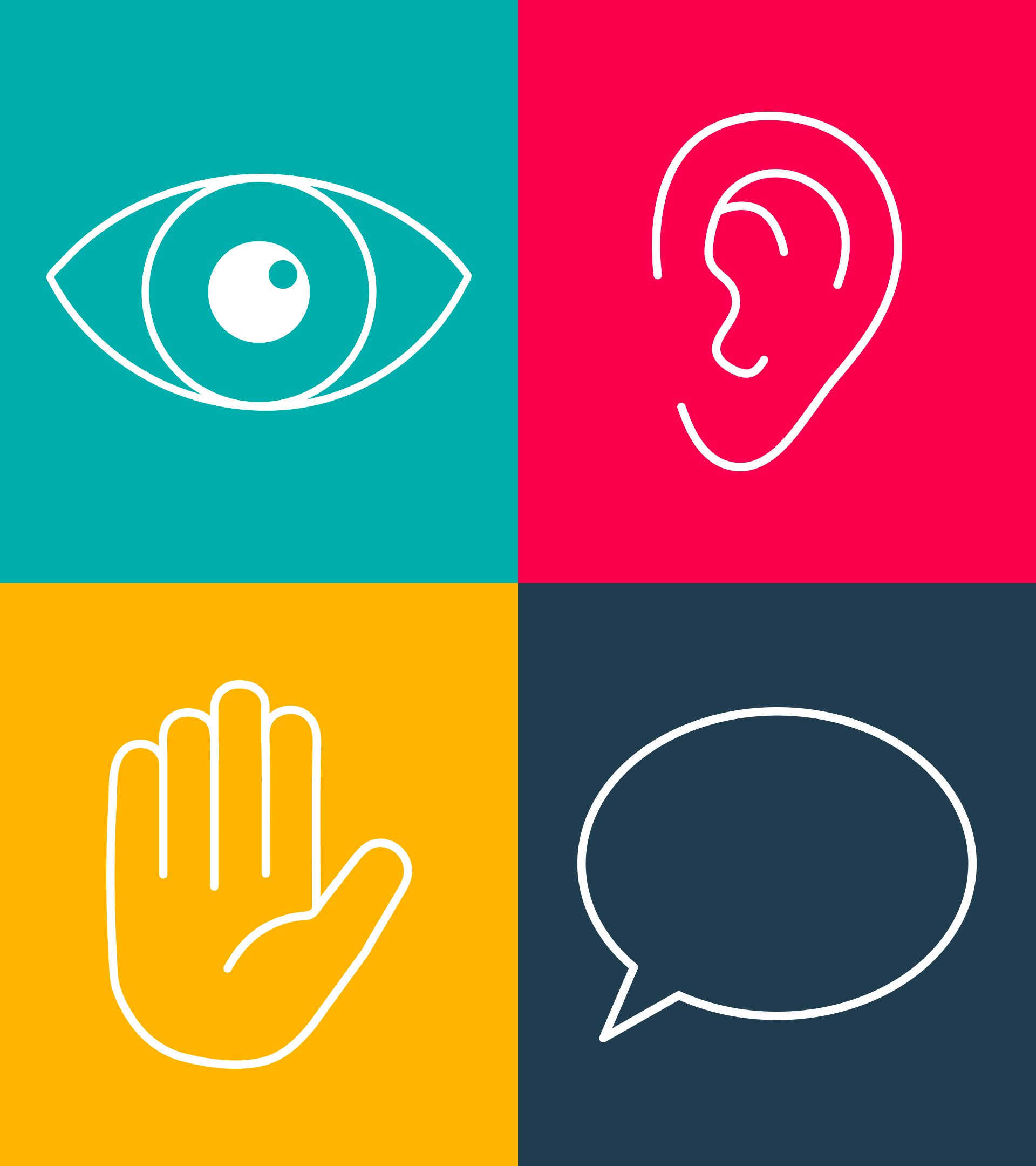Accessible website design: Everything you need to know
Accessibility is an important element of any type of design, and has become increasingly important for website design. In this article, we’re going to explore accessible web design and share some best practices to help you make sure your website can be easily used by all.
What is website accessibility?
Just like in the real world, accessibility in website design refers to the practices of ensuring that websites are able to be used by everybody. This includes catering to auditory, cognitive, neurological, physical, speech and visual disabilities. As well as being able to understand, navigate and interact with websites, they should enable users of all abilities to contribute to the web as a whole.Accessible web design best practices
It’s important to audit your existing website to ensure that it follows accessible web design best practices wherever possible. Understanding Accessibility highlights five main areas of web design that contribute to website accessibility. Let’s look at the five key areas of designing accessible websites in detail.Colours
People with learning disabilities and visual impairments perceive and understand different types and combinations of colours differently. One of the toughest elements of colour in accessible web design is the different requirements and preferences of different groups. For example, those with learning disabilities often prefer soft colours that are less distracting, while those with visual impairments may find bright, bold colours easier to see. Key colour considerations include:- Not using too many different colours
- Ensuring that there is enough contrast between colours
- Using colour-blind-friendly colours
- Allowing users to change the colour of text
- Choosing colours that best support your demographic
Typefaces
The right choice of typeface can greatly improve the accessibility of a website. Font choice and size make up a large part of this, along with the size and layout of text. Rounded fonts are easier for those with learning disabilities to read, and headings should be presented in a logical hierarchy to support those using a screen reader. Key typeface considerations include:- Choosing easy-to-read fonts
- Ensuring the correct hierarchy of headings
- Using short sentences
- Optimising the number of characters per line
- Allowing users to change the size of text
Media
Adding animations and interactive elements can help to make your website design more accessible and engaging. However, they can also be distracting and obstructive, so it’s important to use them sparingly. The user experience should be at the forefront of accessible website design, and these additional elements should only be included where necessary. Key media considerations include:- Avoiding too much movement on the page
- Including clear captions for all visual media
- Using alt text on images to support screen readers
- Making sure controls and buttons are clear and easy to use
- Ensuring that interactive elements can be skipped without losing any content
Layout
Ensuring that the layout of each page is logical and consistent not only supports accessibility, but is also an important design consideration in itself. Responsive website design has become the norm over recent years, which means that these sites work well and look great on a variety of devices. Key layout considerations include:- Using a clear, consistent and logical layout
- Including breadcrumbs for easy navigation
- Ensuring that menus are clear and easy to understand
- Making sure the site can be navigated by keyboard only
- Designing for all devices
Development
The back end of the website is as important as the front end when it comes to accessibility. To ensure that the website remains user friendly throughout any changes and updates, it’s important that the web developer is aware of and understands the choices behind your accessible website design. Key development considerations include:- Defining hover states for mouse input
- Confirming typefaces, font sizes and hierarchy
- Checking the accessibility of colour combinations
- Specifying how interactive elements and animations work on different devices
- Including clearly labelled error states for forms and inputs
Accessible web design agency in Nottingham
Whether you’re creating a brand-new website from scratch or upgrading your existing site as part of a brand expansion or relaunch, it’s important to work with a design agency that understands the importance of accessible website design.m360 is a Nottingham website design agency that specialises in helping brands to showcase their products and services while creating deeper, more meaningful connections with customers. We see accessible web design as an essential part of any website project, and are always happy to discuss additional accessibility requirements to meet the needs of your customers. Get in touch with us today and we’ll help to make sure your website is user friendly for all.
